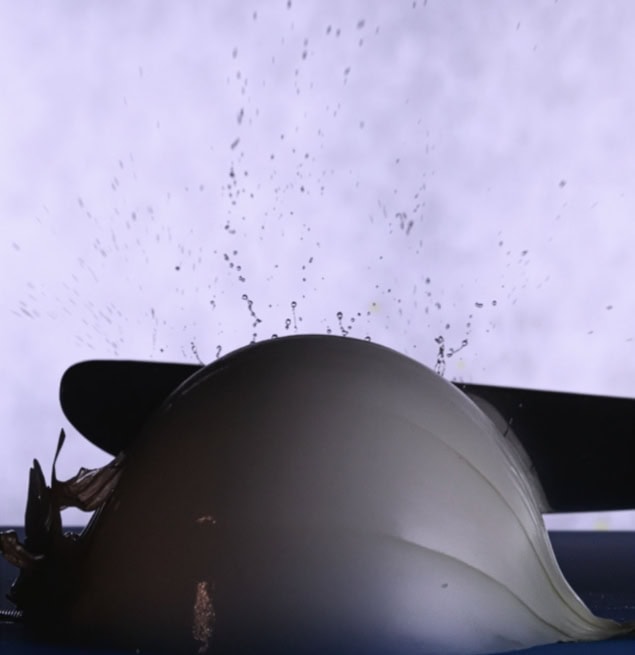
Researchers in the US have studied the physics of how cutting onions can produce a tear-jerking reaction.
While it is known that volatile chemicals released from the onion – called propanethial S-oxide – irritate the nerves in the cornea to produce tears, how such chemical-laden droplets reach the eyes and whether they are influenced by the knife or cutting technique remain less clear.
To investigate, Sunghwan Jung from Cornell University and colleagues built a guillotine-like apparatus and used high-speed video to observe the droplets released from onions as they were cut by steel blades.
“No one had visualized or quantified this process,” Jung told Physics World. “That curiosity led us to explore the mechanics of droplet ejection during onion cutting using high-speed imaging and strain mapping.”
They found that droplets, which can reach up to 60 cm high, were released in two stages – the first being a fast mist-like outburst that was followed by threads of liquid fragmenting into many droplets.
The most energetic droplets were released during the initial contact between the blade and the onion’s skin.
When they began varying the sharpness of the blade and the cutting speed, they discovered that a greater number of droplets were released by blunter blades and faster cutting speeds.
“That was even more surprising,” notes Jung. “Blunter blades and faster cuts – up to 40 m/s – produced significantly more droplets with higher kinetic energy.”
Another surprise was that refrigerating the onions prior to cutting also produced an increased number of droplets of similar velocity, compared to unchilled vegetables.
So if you want to reduce chances of welling up when making dinner, sharpen your knives, cut slowly and perhaps don’t keep the bulbs in the fridge.
The researchers say there are many more layers to the work and now plan to study how different onion varieties respond to cutting as well as how cutting could influence the spread of airborne pathogens such as salmonella.



